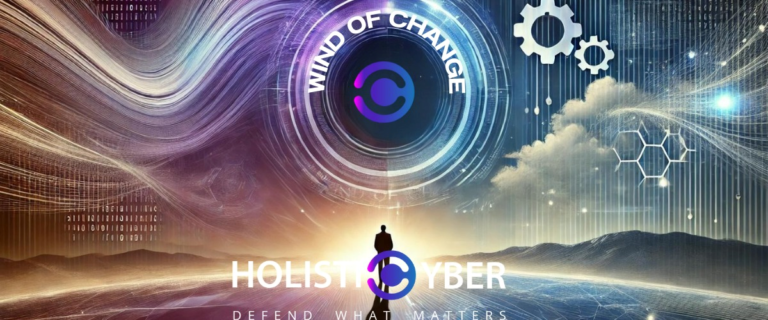Cybersecurity fears are escalating. Cybercrime in the post-pandemic world has skyrocketed, and nation-state grade threats sit on every organization’s doorstep. Four out of five organizations report an increase in cyber threats since the start of the pandemic. Those fears are intertwined with supply chain attack headlines and apprehension of nation-state cyber threats emanating from the Russian-Ukrainian war, which has executive boards worldwide looking at a virtual CISO as a countermeasure to cyber concerns.
If you’re surprised that boards are taking an interest in cybersecurity, you’re not alone. In the past, boards tended to ignore cybersecurity threats. Their focus was on management and oversight; cybersecurity was an IT issue outside of their purview. Those days are behind us.
In 2021, Deloitte issued a report titled “The changing role of the board on cybersecurity.” The report noted costs and reputational damage stemming from cyberattacks have caught the board’s attention. These long-reaching implications, which can threaten business continuity, have pushed boards in the United States and around the world to view cyber risk as “an enterprise-wide risk management issue. According to the report, cybersecurity oversight is the second most important topic for most boards, right after strategic planning.
While exploring different cybersecurity approaches, many boards are hiring virtual CISOs rather than full-time CISOs to oversee their company’s cybersecurity approach. They are finding these shared hires offer a new dimension in the battle to protect networks.
Nation-State Grade Threats Can be Warded Off by Utilizing a Virtual CISO
Every organization, whether private or public, is sitting in the crosshairs of a nation-state grade cyberattack. Stemming from Russia, China, Iran, or North Korea, these attacks look to disrupt business, take down critical infrastructure, and steal.
To handle such threats, organizations need to improve their security posture by creating stronger defenses, maximizing defensive investments by prioritizing resources and focusing on the biggest threats to their organization.
Virtual CISOs have the experience needed to provide organizations with an enhanced security posture, improved risk mitigation, and offer nation-grade security experience. They are experts completely engrossed in tracking the current threat landscape. Perhaps most importantly, Virtual CISO offers reassurance to boards who are liable for their company’s security stance as they help companies formulate their defense plans.
Improving the Level of Cybersecurity
Virtual CISOs introduce a different level of security to an organization. For a moment, compare a virtual CISO to a full-time CISO. The full-time CISO who implements a security system has no third-party oversight. Every report they offer is at risk of being tainted by self-bias.
Security measures may be in place and may even be effective, but they lack the third-party oversight that a virtual CISO whose reputation and future client opportunities hinge on delivering absolute security.
Virtual CISOs offer another benefit when contrasted against their full-time colleagues. Due to the exposure to outside organizations, they have a much broader view of the threat landscape. They see cybersecurity applications in multiple environments and can take working approaches and best practices from other networks and apply them to this environment.
Boards are concerned about ransomware and attacks that could disrupt or upend their business. They worry about data breaches that bring about multi-million dollar fines. Increasing the degree of protection with an outside, virtual CISO is a powerful incentive for a risk-averse board.

The Virtual CISO’s Role
Virtual CISOs conduct penetration testing, scan for vulnerabilities and develop effective employee training programs to keep companies safe. However, their role goes much deeper.
A Virtual CISO begins their engagement with a full network assessment. They identify attack surfaces, look for vulnerabilities, and review the organization’s security policies and incident response plans. Working together with existing cybersecurity employees, they implement security changes, close critical vulnerabilities, and bring security policies up to date.
Governance plays a key role in cybersecurity, and virtual CISOs are up to the task. From improving the organization’s security infrastructure to developing training programs and upgrading security policies, they enhance the company’s security posture.
Virtual CISOs typically create a risk register. This list is based on their full network assessment and helps them track areas where the company is exposed. Throughout their tenure at the company, they move down the list, marking progress and closing out vulnerabilities.
From the board’s perspective, one of the most important tasks the virtual CISO takes on is keeping the board up to date. These reports, which range from monthly to quarterly depending on the company, highlight risk areas and let the board know where they are exposed.
Finding a Virtual CISO Today
As demand for enhanced security increases, businesses are looking for reliable virtual CISOs. It may seem counter-intuitive, but reporting is one of the most important tasks the virtual CISO will handle. They need to report to C-level executives and the board, keeping them informed. Candidates who are unable to deliver reports are this level, regardless of their cybersecurity knowledge, probably won’t satisfy the needs of the role.
Working with a third party has advantages, but one clear disadvantage is the candidate doesn’t know the company. During the interview process, find out how they intend to balance business risk and security controls and what they believe appropriate levels of restriction are. Make sure that the virtual CISO’s attitude and approach are compatible with your corporate culture.
Find out what type of experience they have in establishing policies, mapping security controls, and demonstrating effectiveness. The more they document their activities, the more likely it is that they meet their targets.
We recommend hiring domain experts who can see the attack surface from the point of view of the attackers. These experts should have nation-state grade expertise developed while working as a CISO in large organizations. Virtual CISOs take ownership of analyzing the organizations’ resources, business priorities, risk tolerance, etc., and must be able to prioritize risks and vulnerabilities based on the risk assessment, business impact analysis, and threat modeling.
At HolistiCyber, we help businesses protect themselves from nation-state attacks with a virtual CISO. Our MyCISO service is a lightweight service that enhances security in both the present and future. It provides organizations with an experienced security expert on a part-time basis that can be called on whenever needed to implement a strong security program designed to keep your network safe and your board informed.
Learn more about how we can help your organization stay more secure with MyCISO. Get in touch today!






